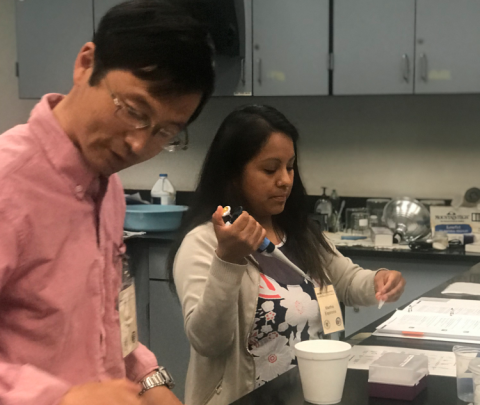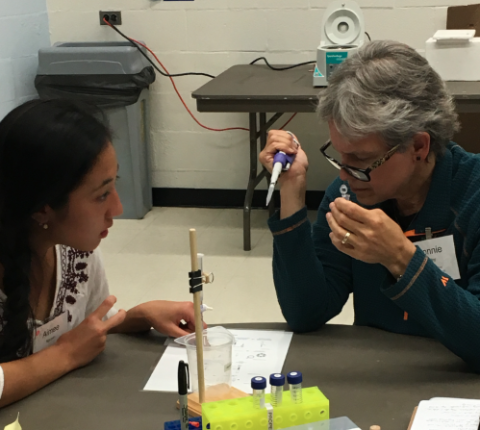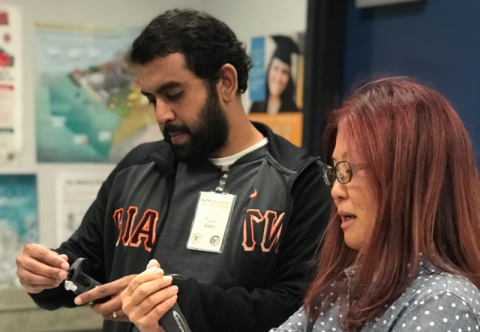In the last month, Maia Binding and her team have worked with some 30 teachers across the San Francisco Bay area to arm them with new tools and knowledge to share with their students this fall. The teachers come from schools in a variety of districts with varying demographics – many of which serve lower income populations. At these schools, students of all backgrounds have the opportunity for hands-on biotech, thanks to the Amgen Biotech Experience (ABE).
This summer has been particularly exciting for the San Francisco ABE site, as it is rolling out new curriculum – some in pilot phase and some to start in the fall. The new materials represent advancements within the biotech industry, with a move toward personalized medicine and the widespread use of a technique called PCR (polymerase chain reaction) for genetic sequencing.

This curriculum gives students a new hook to become excited about the biosciences, says Binding. “We already had a storyline that was relevant for ABE students, to engage them and make them want to understand science more, and we are excited to add the new storyline to continue to make that connection,” she says. Having a real-world-based curriculum “makes biotech less abstract and allows teachers to sit back and focus on teaching, as they have good materials in front of them, in addition to the right equipment and tools.”
The teachers piloting the new material in professional development institutes (PDIs) this summer were excited, Binding says, to try out PCR themselves and think their students will respond well to the personalized medicine story. To help give ABE teachers more context for the new unit, Vivienne Watson, a principal scientist at Amgen, gave a talk at one of the PDIs about research in and around personalized medicine.
In the pilot curriculum, students will extract DNA from their own cheek cells and run PCR. Their task is to look for the gene for tasting PTC – or phenylthiocarbamide, a compound that some perceive as very bitter, while others only slight, and yet others not all. In addition to running PCR, they also use gel electrophoresis and behavioral metrics, to give them comparative data.
This new unit, affectionately called ABE 2.0, is meant to add on to and complement the traditional ABE materials on the production of synthetic insulin. “ABE 1.0 is very relevant and important but the techniques have been around for a long time,” Binding says. “It’s good for our students to have exposure to both, in part because they have to understand the original before they can understand the latest technology.”

Bringing in the tools, funding, and know-how to make PCR possible in schools across the Bay area is rewarding for Binding who has been working with the San Francisco ABE site since 2011. As the program has evolved, they have increasingly helped teachers hone in on how to teach the biotech curriculum rather than just focusing on lab techniques.
Giving teachers this depth of knowledge is particularly important in lower resourced areas. In the Bay area, Binding and her team have been working, for example, with a district in San Jose whose students are often non-native English speakers and who do not have much exposure to the tech world. There, the schools are eager to adopt ABE district-wide, but it will take time for training, Binding says, as they have close to 80 biology teachers. This summer, ABE ran one PDI just for San Jose teachers in addition to other PDIs, and they look forward to working with more teachers in the future.
